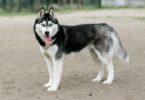Imagine a loyal companion who thrives on adventure, equally at home exploring forests or curled up by your feet. This is the essence of the German Shorthaired Pointer—a breed celebrated for its intelligence, athleticism, and deep bond with families. Whether you’re an active outdoors enthusiast or seeking a devoted pet, this versatile canine offers a unique blend of energy and affection.
Originating in 19th-century Europe, these pointers were bred to excel in hunting and fieldwork. Their adaptability makes them ideal for diverse roles, from skilled trackers to playful household members. Today, they’re cherished not just for their working abilities but also for their gentle demeanor around children.
This guide explores everything from their storied history to practical care strategies. You’ll learn about their exercise needs, training techniques, and how to address common behavioral quirks. For those considering adding one to their family, understanding their high-energy nature is key—proper guidance turns challenges into rewarding experiences.
Looking for deeper insights? Our complete breed guide dives into health tips and specialized care routines. Stay tuned as we unpack how to nurture this remarkable breed’s potential while fostering a happy, balanced relationship.
Understanding the german pointer dog
Balancing power and grace, this athletic breed seamlessly transitions between rugged fieldwork and cozy family moments. Recognized by the American Kennel Club for its distinctive traits, it combines a muscular frame with a short, water-resistant coat—ideal for diverse terrains.
What Defines the Breed
Standing 21–25 inches tall, these pointers showcase lean muscles and expressive eyes reflecting sharp intelligence. Their weatherproof coat, often liver or roan-colored, requires minimal grooming. Temperament blends enthusiasm with loyalty, making them eager learners during training sessions.
Natural instincts shine through their “pointing” stance when detecting game. Field trial champions demonstrate remarkable stamina, while home environments reveal affectionate behavior toward children. Early socialization helps channel their energy into positive interactions.
From Field to Family Room
Fédération Cynologique Internationale standards highlight their dual-purpose design. Outdoors, they track scents with precision and retrieve downed birds. Indoors, they adapt by curling beside owners or playing gentle fetch games.
Structured routines prevent boredom-driven mischief. Morning runs satisfy their need for exercise, while puzzle toys engage problem-solving skills. This balance ensures they thrive as both skilled hunters and patient companions.
Breed History and European Origins
In the rolling countryside of 19th-century Germany, hunters envisioned a four-legged partner capable of mastering land and water. They blended traits from Spanish pointers, English foxhounds, and local tracking breeds to create an agile companion. The goal? A dog that could locate game, signal its position, and retrieve prey—all in one outing.
Foundation, Recognition, and Early Development
By the 1870s, selective breeding programs formalized the german shorthaired pointer's characteristics. Hunters prioritized endurance, intelligence, and a weather-resistant coat. The first official stud-book emerged in 1897, documenting lineage and solidifying standards across Germany.
European hunting traditions deeply influenced the breed's evolution. Unlike specialized hounds, these dogs thrived in varied terrains—forests, marshes, and open fields. Their ability to switch between pointing and retrieving made them indispensable for sportsmen.
International recognition accelerated in the early 1900s. The Fédération Cynologique Internationale acknowledged the german shorthaired pointers in 1954, cementing their status among global dog breeds. Today, their legacy as versatile hunting dogs remains rooted in those formative years of careful breeding.
Characteristics and Health Considerations
Understanding a breed’s physical makeup and potential health risks helps owners provide better care. These dogs combine athletic builds with unique coat features, but like all breeds, they have specific vulnerabilities to watch for.
Physical Traits and Coat Details
Males typically stand 23–25 inches tall, while females range from 21–24 inches. Their muscular yet streamlined bodies support agility, with deep chests and strong legs built for endurance. The head features a broad skull, almond-shaped eyes that radiate intelligence, and ears that lie flat against the face.
The short, dense coat feels slightly rough to the touch. This water-resistant layer sheds minimally but requires weekly brushing to remove debris. Common colors include solid liver, liver-and-white roan, or combinations with distinctive ticking patterns.
Genetic Health and Common Issues
While generally robust, the breed faces genetic risks like hip dysplasia and eye conditions such as entropion. Blood disorders like von Willebrand’s disease occasionally appear, requiring veterinary screening. Regular check-ups help catch these issues early.
Responsible breeders test for hereditary conditions through organizations like the Orthopedic Foundation for Animals. Preventive care, including joint supplements and balanced diets, supports long-term wellness. With proper management, most live active lives well into their teens.
Training and Daily Exercise for a Happy Home
Consistent routines transform boundless enthusiasm into well-mannered behavior. This athletic breed thrives when physical exertion meets mental challenges—skipping either leads to restless antics.
Managing High Energy Levels with Structured Exercise
Daily vigorous activity is non-negotiable. Aim for 60–90 minutes of exercise split between morning and evening sessions. Running, hiking, and swimming build endurance while satisfying natural instincts. Fetch games double as bonding opportunities and impulse control practice.
Vary locations to keep walks engaging. Forest trails provide new scents, while open fields allow sprinting. Weekend adventures like kayaking or obstacle courses prevent monotony. Structured playtime reduces destructive chewing or digging.
Obedience, Agility, and Mental Stimulation
Start obedience training during the puppy phase using positive reinforcement. Commands like “leave it” curb chasing tendencies, while “place” teaches calmness. Short, frequent sessions work better than marathon drills.
Agility equipment like tunnels and weave poles channels energy into focused tasks. Hide-and-seek games with treats sharpen problem-solving skills. Puzzle feeders turn mealtime into brain workouts. Rotate activities every day to maintain interest.
Combining physical exertion with cognitive challenges creates a balanced companion. Pair morning jogs with afternoon scent work or trick training. This approach prevents boredom and strengthens your bond through shared achievements.
Navigating Challenges: Prey Drive and Energetic Behavior
Living with a high-energy companion requires strategies to balance natural instincts with household harmony. These athletic hunting dogs thrive when their drive to explore and chase is thoughtfully managed. Below are solutions to common behavioral hurdles faced by families with active pets.
Managing a Strong Prey Drive
Their heritage as versatile hunters means small animals like squirrels or cats may trigger intense chasing. Secure fencing and leash discipline prevent accidents. Teach a reliable “leave it” command using high-value treats to redirect attention during walks.
Interactive games like scent work or flirt pole sessions channel instincts constructively. For homes with other pets, gradual introductions and supervised interactions build trust. Crating during absences reduces stress for both animals.
Tips for Controlling Excessive Excitement and Jumping
Overstimulation often leads to jumping or mouthing. Reward calm greetings by ignoring excited behavior until paws touch the floor. Structured routines with scheduled playtimes help regulate energy levels.
Mental exercises like puzzle feeders or obedience drills improve focus. Short training sessions (5–10 minutes) multiple times daily reinforce impulse control. For separation anxiety, gradual alone-time practice paired with chew toys fosters independence.
Early socialization and consistent boundaries are key. Those raising a healthy puppy should start training at 8–10 weeks to shape desirable habits. With patience, even spirited dogs adapt beautifully to family life.
Final Thoughts on Embracing the German Pointer Dog Lifestyle
Living with a spirited, high-energy companion brings both joy and responsibility. The german shorthaired pointer thrives in homes where outdoor adventures and structured routines coexist. Their historical roots as versatile hunters shine through in their athletic build and sharp intellect, demanding consistent mental and physical engagement.
Prospective owners must assess their capacity for daily activity. Long walks, puzzle games, and training sessions aren’t optional—they’re essential for a balanced life. While their affectionate temperament makes them stellar family pets, challenges like prey drive require patient guidance and early socialization.
Success stories from AKC enthusiasts highlight their reliability in dog sports and loyalty as companions. However, their lifespan and vitality depend heavily on responsible ownership. Those considering this breed should prioritize reputable breeders or rescue groups that prioritize health testing.
Could your household embrace morning jogs, weekend hikes, and playful training? If an active lifestyle aligns with your routine, the shorthaired pointer offers unmatched devotion. For insights into caring for similar energetic breeds, explore our guide on maximizing longevity in active breeds.
Ultimately, this partnership rewards commitment with laughter, loyalty, and endless tail wags. The choice lies in matching their vibrant spirit with your capacity for adventure.
FAQ
How much daily exercise do these pointers typically require?
They thrive with 60-90 minutes of vigorous activity like running, hiking, or structured play. Without proper exercise, their high energy may lead to restlessness.
Are they suitable for homes with young children?
Yes, their loyal and affectionate temperament makes them great family pets. Early socialization ensures gentle interactions with kids.
What genetic health issues should owners monitor?
Common concerns include hip dysplasia and eye conditions. Regular vet check-ups and screenings for von Willebrand’s disease are recommended.
How can I manage their strong instinct to chase small animals?
Use positive reinforcement training to reinforce recall commands. Leash walks in open areas and supervised outdoor time help control prey-driven behaviors.










Leave a Comment